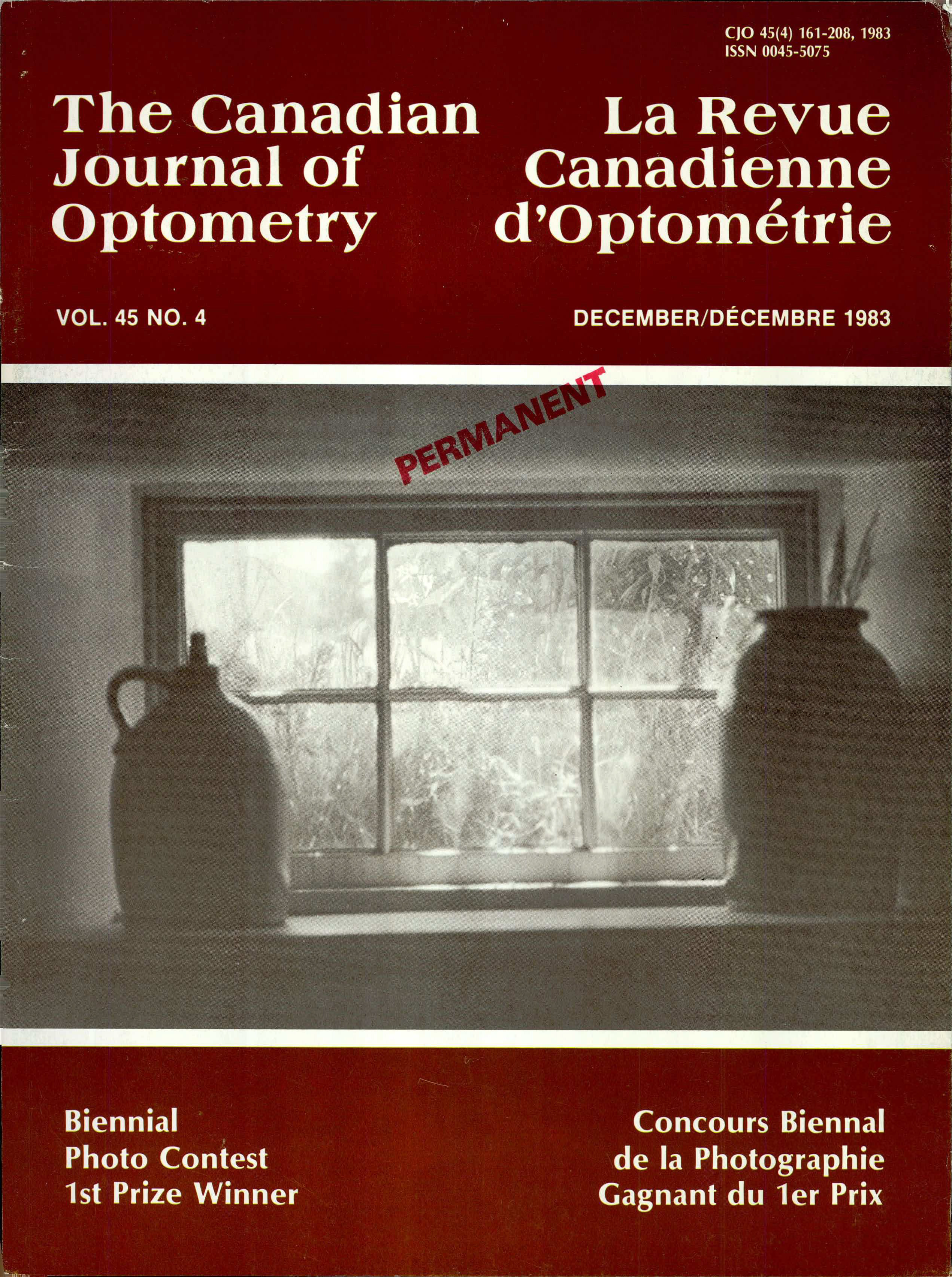A Stereoacuity Test for Detecting Aniseikonia
DOI:
https://doi.org/10.15353/cjo.v45i4.4317Abstract
Thresholds of stereopsis were measured bilaterally using two vertical pins, one nearer than the other to the subject. In the majority of cases, the threshold when the left pin was nearer was different from the threshold when the right pin was nearer. This inequality was thought to be caused by aniseikonia. When calculated from bilateral inequalities, aniseikonia was found to be of small amount. The effect of inequalities on the measurement of stereoacuity was also investigated by comparing bilateral and unilateral arrangements of the same data. Stereoacuity calculated from bilateral data was found to be more precise than that calculated conventionally ( i.e. unilaterally).
Published
How to Cite
Issue
Section
License
Copyright (c) 1983 W L Larson

This work is licensed under a Creative Commons Attribution-NonCommercial-NoDerivatives 4.0 International License.


